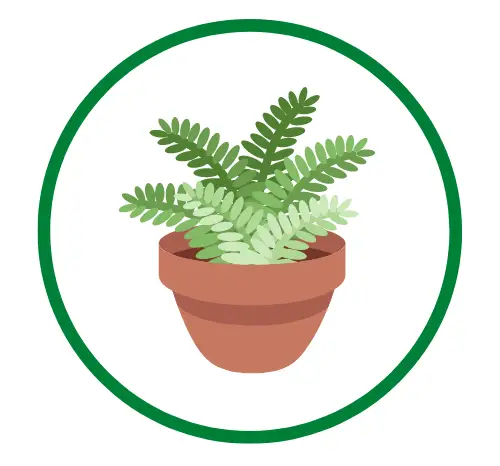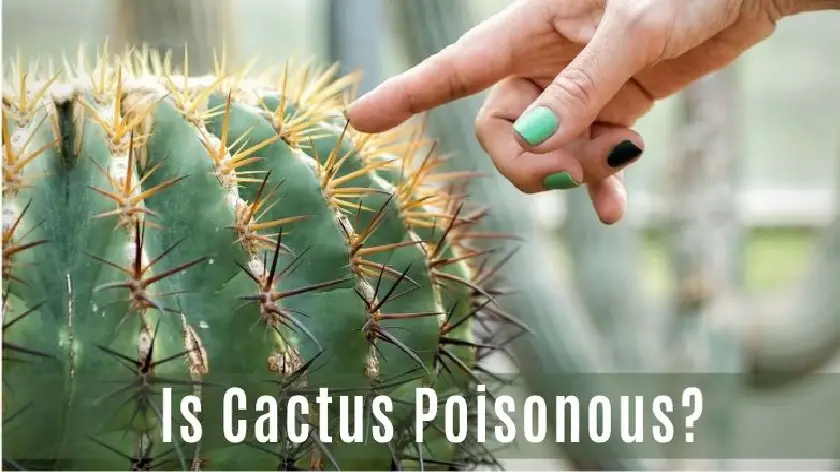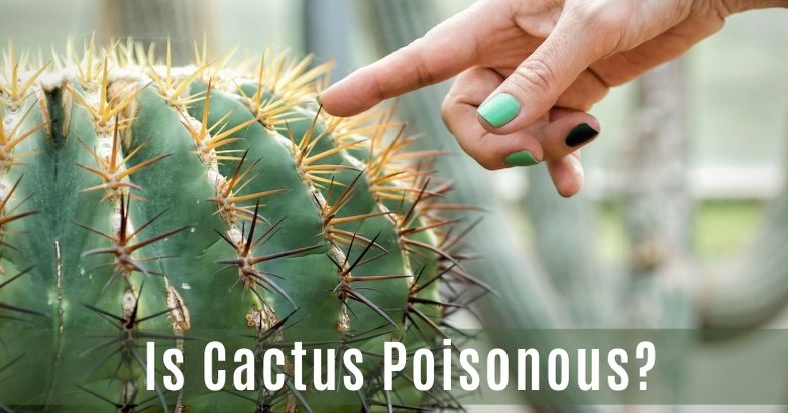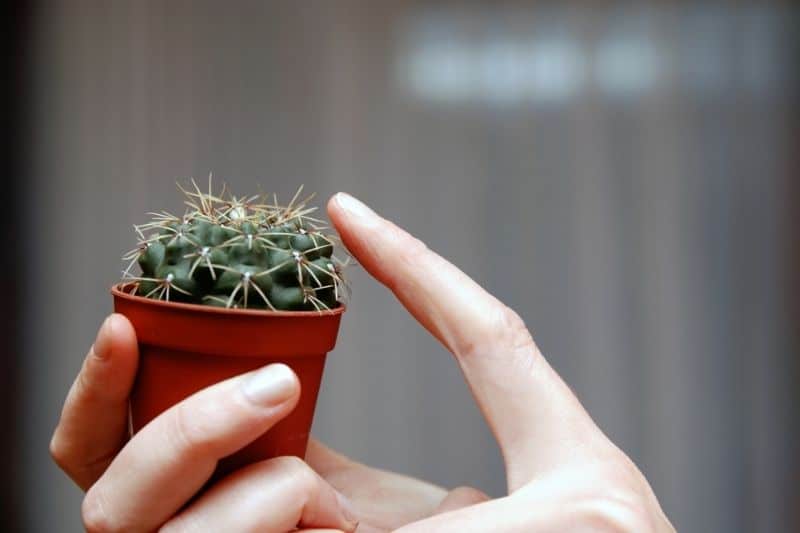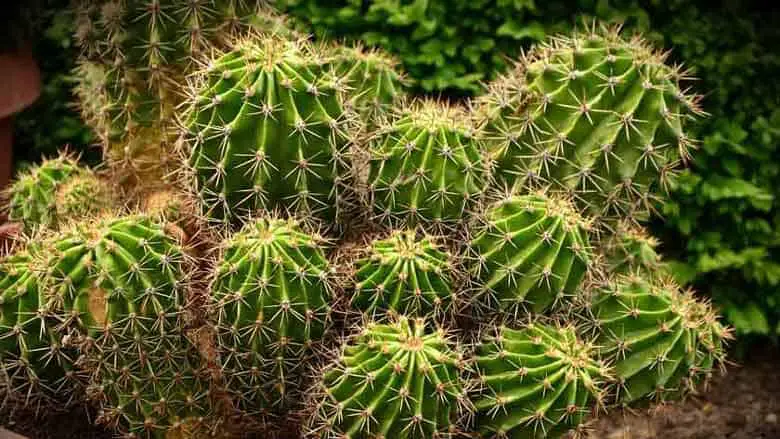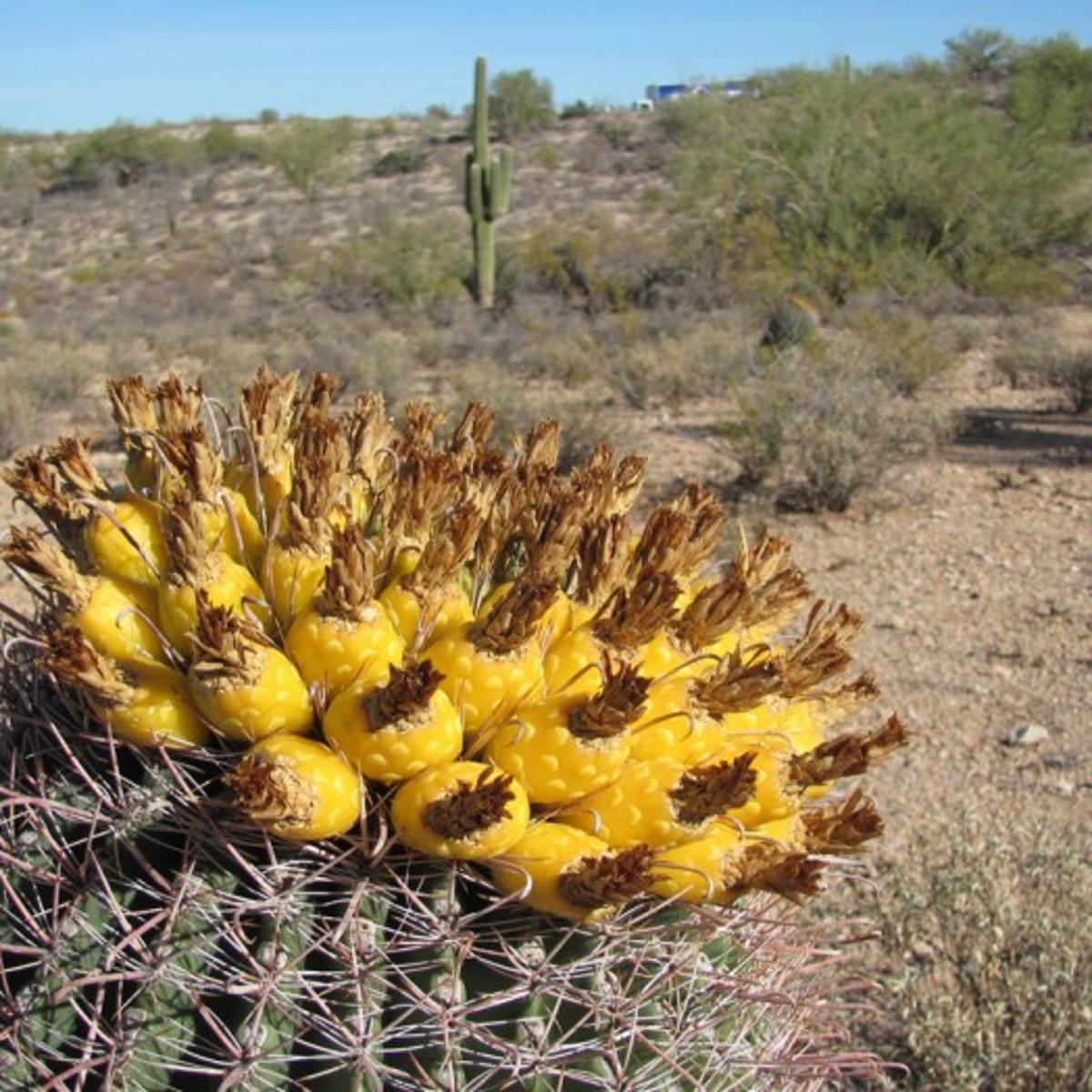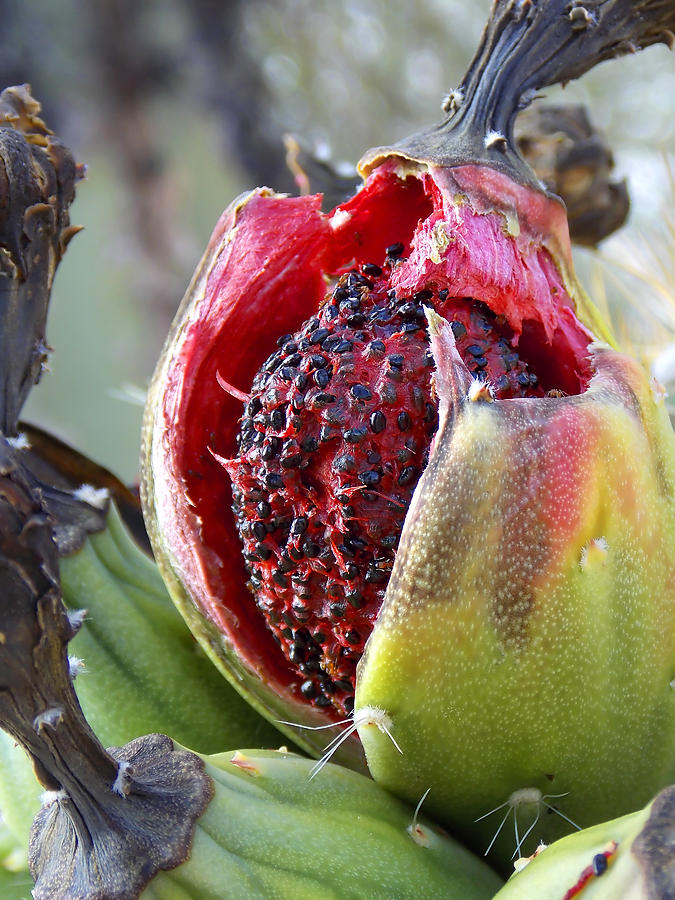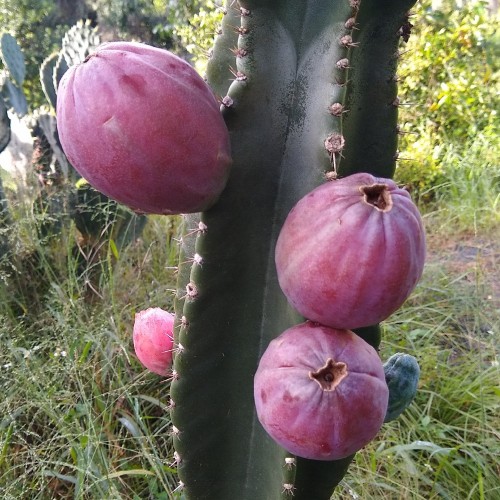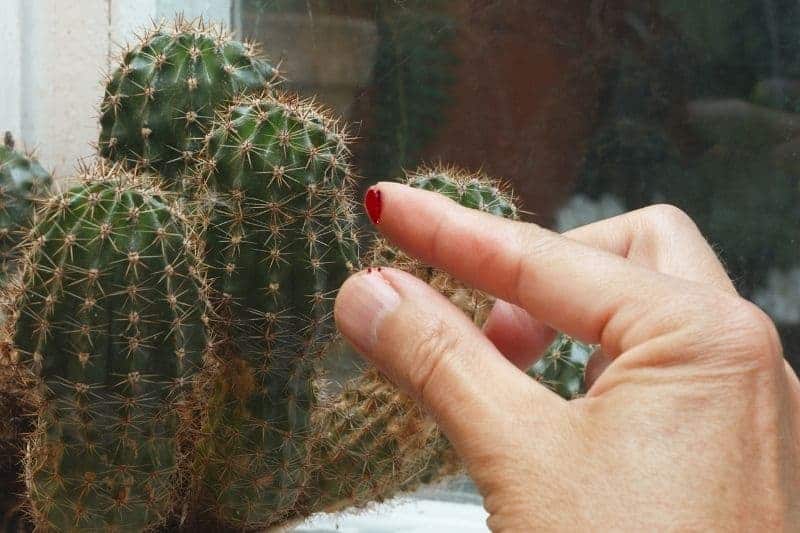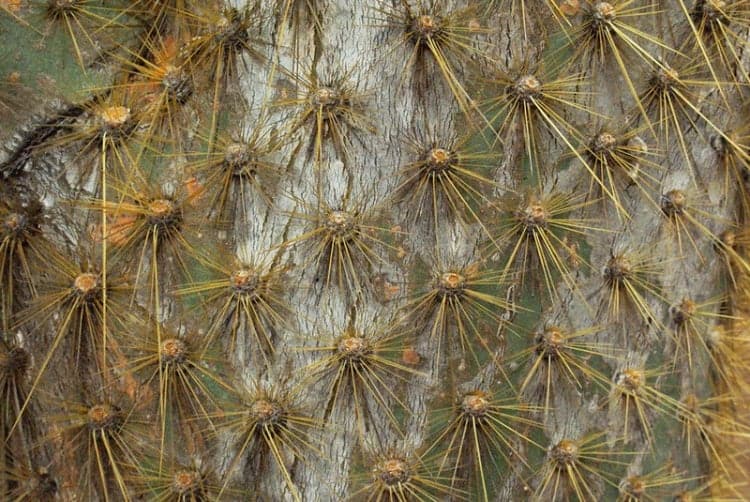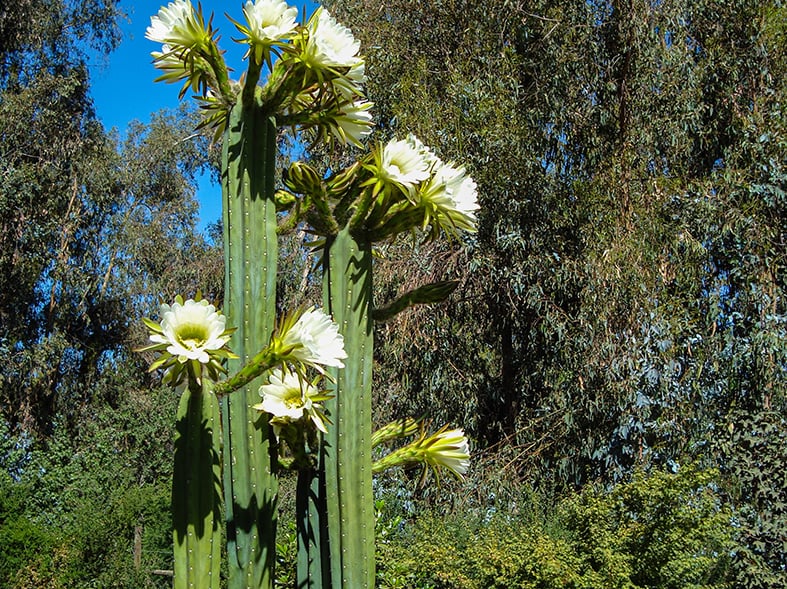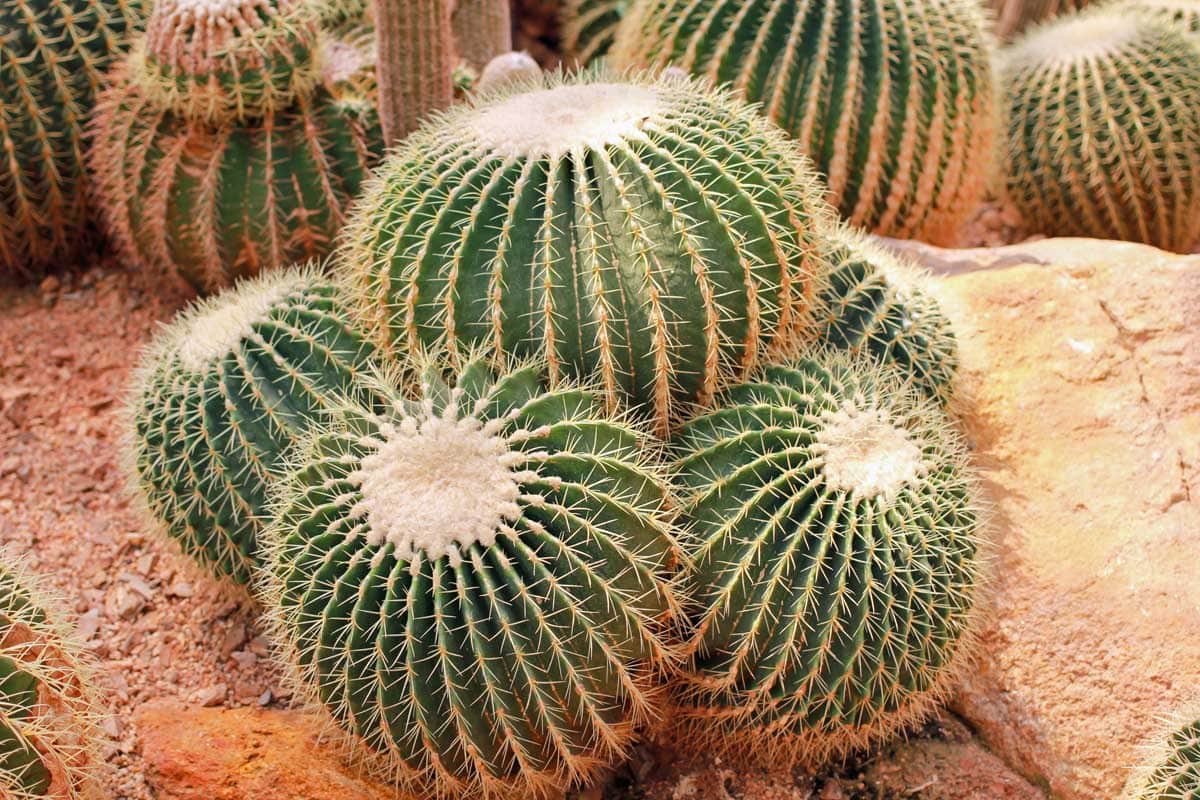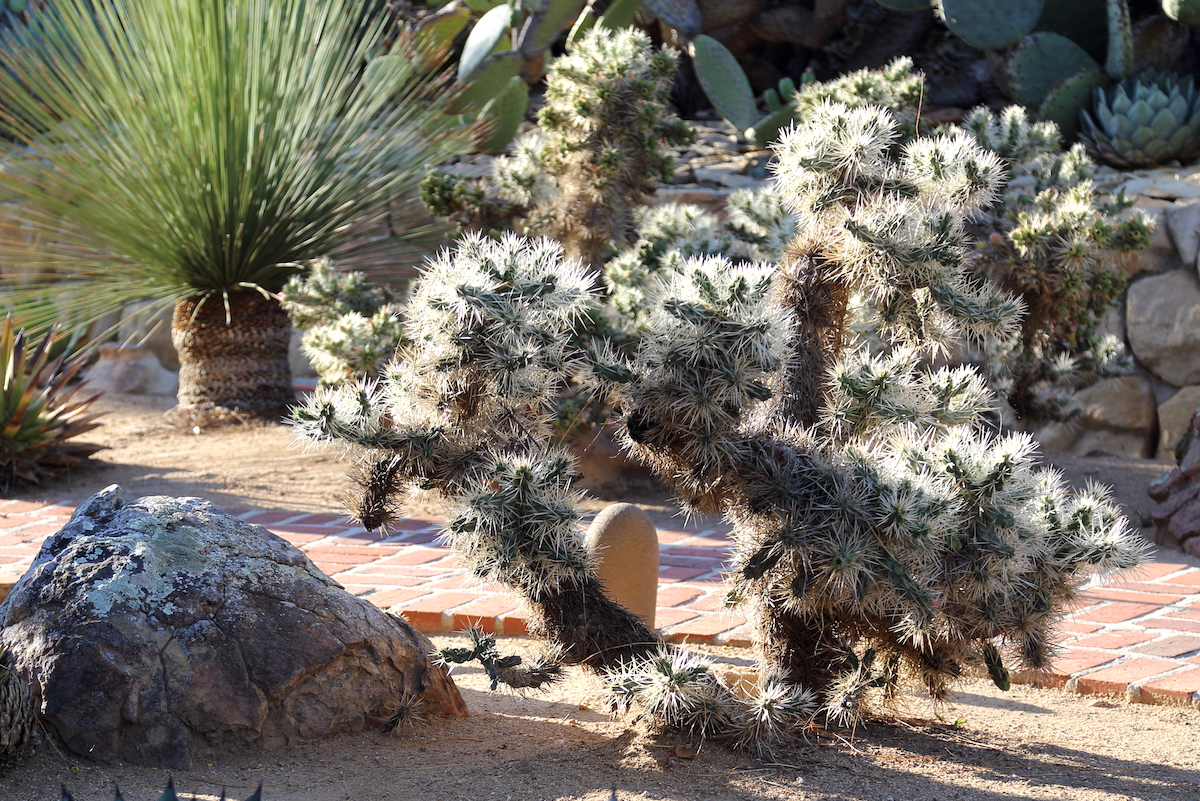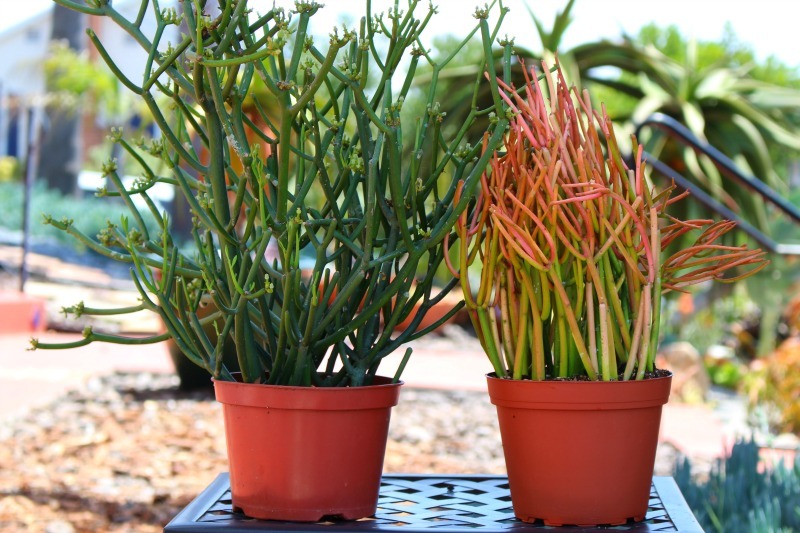Are Cactus Poisonous? Learn about Cacti Spines!
Cacti are some of the world’s most fascinating cactus species. They are easy to find in desert areas. Today, however, it’s also common to see them inside. They can thrive in some of the harshest environmental conditions and can go for extended periods without water. You will immediately notice a cactus’ pointed needles, also referred to as Glochids, if you see one. The next query is: Are cacti poisonous? Can their glochids injure you? Let’s uncover the facts about cacti plants and provide the answers to these queries.
Are Cactus Poisonous?
You probably found this article because you wanted to know if cacti were poisonous or not.
The short answer to that is yes and no.
Both poisonous and non-poisonous cacti species exist. Remember that some cactus spines, like the Cholla spine, can be harmful as well.
For the time being, let’s focus on non-poisonous cacti. I’ll also give you a list of poisonous cacti later on that you should be aware of.
When non-poisonous cactus spines penetrate deeply into your tissues, the issue arises. They may result in tissue death, bleeding, or even bruising.
Cacti can also be harmful if you eat them because they can cause diarrhea and stomachaches. The fibrous plant matter of the Christmas Cactus or Holiday Plant, which can massively induce diarrhea and vomiting, is a good example.
And also, some individuals may have allergic reactions to the spines on cacti, so keep that in mind as well.
Also read 10 Best Succulents For Bathrooms
Are There Any Poisonous Cactus Plants?
There aren’t any poisonous cacti in general. However, you must exercise extreme caution when handling any cacti that have hallucinogenic qualities.
Are golden barrel cactus poisonous: find out now!
What Justifies Cacti’s Needles?
Cacti have needles for specific reasons. Some of them are for:
Prevention of Predators
Cacti are a food source for creatures like desert tortoises, bighorn sheep, wild pigs, and rabbits. Cactus spines are excellent at protecting the main body. Upon contact, the spines can pierce the skin, and some species, like the cholla, can even fly to your face and inflict harm.
Provide cover to preserve the water content of the cactus
Cacti require as much shade as possible to shield themselves from the intense desert sun. Thousands of needles are present on a single cactus plant, and they work as a unit to shield the plant from the intense sunlight that could cause moisture loss.
In foggy areas, capture water and air
Cactuses can slake their thirst in unexpected circumstances. For instance, in hazy areas, cactus plants can collect water from the atmosphere using their needles. The fog eventually condenses and falls to the ground below after settling on the spines. The water is then stored by the plant’s roots.
Cacti lose very little moisture because of the spikes. The cactus’ spines act as a buffer, limiting airflow around it and preventing water loss.
Are Poisonous Cacti to People?
Humans cannot be poisoned by cacti. However, if you eat one, like a Christmas plant, you could experience stomachaches and diarrhea. Avoid touching the cacti needles as much as you can because some people may experience allergic reactions as a result of them.
Cactus Thorns— Spikes and Glochids
Most cacti species have cactus spines, which are modified leaves. They can be either soft or sharp, and they are typically located on the outer edges of cactuses. By hurting if touched, the needles help to defend the plant from predators. Cactus needles come in a variety of shapes, including bristles and glochids.
Bristles are not as sharp as glochids and won’t irritate people as much.
Glochids, on the other hand, resemble tiny hairs and are found on various cacti species in dry climates, such as prickly pear cactus and desert flora. Because they hook onto your skin, these glochids can irritate you if they come into contact with it.
The spines on some cacti varieties, such as the Hedgehog or Saguaro, are what give rise to the common misconception that cacti spines are poisonous. However, this is not the case for the majority of other types, such as the Prickly Pear Pads, which have soft bristles.
Even though cactus needles typically don’t contain any toxins or venom, it is still important to use caution because they could irritate your skin.
Are Cactus Fruits Poisonous?
Fruits from cacti are not toxic. They have a lot of sugar and water in them.
It sounds like eating the cacti fruit, also known as prickly pears or Indian figs, would be pretty unpleasant.
However, given their fleshy texture, they resemble an apple or honeydew melon.
What Kinds Of Cactus Fruits Are Edible?
Prickly Pear
In Mexico, prickly pear is a the most common fruit variety. They have a velvety, orange skin that is typically peeled off before eating so that the nutritious and savory yellow flesh can be enjoyed.
Dragon Fruit (White Fleshed Pitahaya)
The tropical plant known as the dragon fruit is attractive, spherical in shape, and greenish-yellow in color.
When it is raw, it has a jello-like texture. Despite this, it has no flavor because the interior is packed with peppery seeds that have sour undertones.
The dragon fruit closely resembles an apple or a pear in appearance. It has a rounded shape, is covered in a thin layer of skin, and has colors that range from light to dark.
Since there are no pits inside of them, the flesh of this specific fruit can be described as having more jelly than, say, a pear.
Small black seed pods that are inside the fruit are known to release quite potent flavors.
Barrel Cactus Fruit
Round, white prickle-covered fruit with yellow skin is produced by the barrel cactus.
Depending on which variety you eat, the flavor can range from sweet to tart and is described as tasting somewhere between watermelon, honeydew melon, grapefruit, and pineapple.
Saguaro Fruit
The Saguaro Fruit has a flavor that is a cross between dried apricots and apples. They are a product of the Americas and are grown in Sonora, Mexico, as well as Arizona and New Mexico.
This succulent is produced by a prickly pear cactus, which has been referred to as “a desert bonsai tree.”
Potential predators are deterred by the pointed spikes along each side of their bodies. While providing shade for small mammals when climbing up plants during the day, it is challenging to access the plant.
Cereus Peruvianus Fruit
Southern Peru and northern Chile are home to the Cereus peruvianus Fruit, also referred to as the Queen of Nectar Fruits.
It is a desert plant that European explorers first learned about while undertaking expeditions to nearby high-altitude regions.
Since ancient times, the fruit has been used to treat a wide range of illnesses, including arthritis and kidney issues.
It has high concentrations of sterols like beta-sitosterol, which reduce inflammation.
What Do You Do If You Get Pricked by a Cactus?
It’s important to wash the area where the cactus prickled you with water and soap as soon as you can afterward.
Clean the area right away if you discover any debris on your skin or if dirt gets into an open wound.
You must also use an antibiotic ointment to safeguard yourself against infection due to the numerous small needles, to be sure.
How to Take a Cactus Needle Out of Your Skin
It’s possible that while you’re calmly watering or moving your cactus from a pot, some needles have already gotten stuck in your finger.
What then ought to you do? The first thing you should do is maintain your composure while obtaining some tweezers or adhesive tape, depending on the size of the needles.
Just use tweezers to pull out the needles that are embedded in your skin. You can also wrap duct tape around your opposing hand and place it over the stuck area.
I advise using a sterile needle to gently poke around until the spines are extracted if they have been broken or have completely remained inside the skin.
How to Remove Cactus Stuck in Skin – General Step by Step
1. Look over the area and locate the places where the needles are lodged.
2. Label the locations of the cactus spines.
3. Check the footwear, apparel, and other accessories you were wearing when you touched the cactus plant. Without coming into contact with your skin, the spines can irritate the skin by poking through socks and pants.
4. If you can see the cactus spines, pinch and remove them with tweezers. You can use a magnifying glass if they are challenging to see.
5. After each time you remove a cactus spine, wipe the tweezers on a piece of paper. Before pulling the other spines, each one should be taken out of the tweezers because they can become sticky. You won’t be able to complete the task if you let the paper towel touch any other surface. After you’re done, throw away the paper towel.
6. Apply a cooling facial toner, such as witch hazel, to the affected area to reduce inflammation.
Removing Cactus Needles Using the Glue Method
- Over the impacted area, spread a thin layer of rubber cement glue that is water soluble. The needles that are sticking out of the skin will be removed by the glue. If you don’t have rubber cement glue, you can also use masking tape or white craft glue.
- Peel one edge of the adhesive carefully up. With your fingertips, lift the edge, then quickly rip it away from your skin. This technique for removing cactus spines is very comparable to using hot wax to get rid of unwanted body hair.
- Simply carry out the procedure once more if you’re using tape. Avoid using the same tape repeatedly because it won’t have the same level of adhesion and you risk reinserting the spines into your skin.Last but not least, dab the affected area with a cotton ball dipped in a cool facial toner to reduce the swelling.
Removing Cactus Needles Using the Pantyhose Method
- Put on a set of heavy disposable gloves.
- Old, unused pantyhose can be rolled up and brushed over the affected area in a single direction. The pantyhose will pull the spines from your skin with each swipe. You might have to swipe more than once. As long as you swipe in a single direction, you shouldn’t feel any spines stuck in your pantyhose.
- Brush the pantyhose in the other direction at this point. This needs to be done several times. To prevent pushing the spines deeper into your skin, be sure to maintain a single direction.
- Make a fresh plug out of the pantyhose, then brush the damaged area clockwise. Stick clockwise to avoid reinserting the cactus needles into your skin, as it may take more than one swipe to remove them.
- The affected area should be covered in a counterclockwise motion. To completely remove the cactus spines, you might need to follow this instruction again. Continually move counterclockwise until every spine has been removed.
- Put the gloves and tights in the trash.
Do Cactus Needles Dissolve? The Wait-and-See Method
Is the cactus spine deeply embedded in your skin, and there’s really nothing you can do to get it out?
You shouldn’t worry because it probably will emerge on its own after some time. If you’re in pain, you can use a pumice stone to smooth out the skin’s spines in areas of your body that aren’t overly sensitive, like the area beneath your feet. The tips must be ground out; the spines do not need to be pulled from your skin.
In other words, if it’s impossible to pull the cactus needles out of the affected area, leave them there. Watch for the spines to break or fall. While you wait, keep an eye out for irritation or infection. If there’s redness, put some Witch Hazel to cleanse and soothe the affected spot. If irritation persists, you should consult a doctor.
Glochids— How To Pull Them Out
Glochids that become stuck on your skin will cause immediate itchiness, burning, stinging, and inflammation.
Some people experience an allergic reaction that results in this turning into blisters, welts, or pustules.
Glochids can irritate your skin for months if you can’t get them out of it right away.
Thankfully, there are a few methods you can use to avoid 95% of the glochids that are stuck to your skin. But remember that getting them all out is essentially impossible.
How to remove glochids from your skin is as follows:
- Use tweezers and a magnifying glass to remove as many glochids as you can.
- Cover the troublesome area with duct tape, then quickly remove it.
- Gauze should be wrapped around the affected area and then dipped in white glue. Pull off the gauze quickly after the glue has dried.
Any of these techniques can be used, and if you use them all, the majority of the glochids should be removed.
Applying an ice pack or a paste made of water and baking soda can reduce swelling if itching, irritation, and inflammation are persistent.
If you’re one of the unfortunate people who experience chronic glochids-induced dermatitis, you should visit your doctor so that the spines can be removed more forcefully and the inflammation and other symptoms can be treated.
Can You Get An Infection From A Cactus Spines?
Because they are sharp and have a large surface area, cactus spines can be dangerous. They can lead to injuries like skin infections and puncture wounds. Chemicals in the spines have the potential to irritate the skin or eyes.
In other words, cactus needles themselves won’t make you sick. The wound or puncture the spines cause will, however, infect you. So be sure to sanitize the area right away.
Are Cacti Poisonous To Cats, Dogs, and Other Pets?
The short answer is no if you have pets at home and are wondering if cacti are poisonous to animals.
But keep in mind that certain cactus spines can irritate animals and trigger allergic reactions if they come into contact with them frequently. Keep in mind that any of the cactus’ parts could be consumed by your pets as well.
Now, if you have dogs who enjoy digging in your garden, keep an eye on them because they could get poked by stray spines. Or even worse, ingest anything at random that contains cactus needles.
How to Keep Your Pet Away from a Poisonous Cactus?
You adore animals, but you also adore cacti! You must therefore devise strategies for enabling these two to coexist. Otherwise, your pet could suffer harm.
Following that, the following are some methods you can use to keep your pet away from a toxic succulent cactus:
Of Course Not for Pets: Cages
You can put all of your cacti in one large cage if you enjoy indoor gardening. Alternatively, you could separate this variety of cacti from the other variety and place them in different cages.
Then place them on shelves or windowsills, or for a more dramatic effect, hang them from the ceiling.
Just be sure to hang them low enough so that watering is accessible if you decide to hang them. Of course, the majority of cacti prefer the monthly or bimonthly soaking method.
Cacti don’t mind being crowded close together. Just keep those spikey ones far enough away from the smooth ones. Due to the high humidity levels created by packing the plants close together, you won’t even need to water them as frequently.
Employ terrariums
If you enjoy indoor gardening and decorating, you might want to think about putting your cacti in closed or open terrariums to keep them safe from your pets. However, choosing large terrariums has a slight drawback in that they are difficult to move around.
The good news is that if your terrarium is heavy, it will be stable enough so that your pets can’t tip them over. Your cacti will have protection from your furry pests in terrariums, and you’d need to water them even less. A terrarium is a decent investment if you’re a busy person.
Spray repellents on pets
For any pet owners out there who also enjoy cacti, this approach is the least expensive practical alternative. You can spray different pet-repellent sprays on your cacti without causing any harm to your plants, and they are readily available in local and online pet stores.
Don’t worry, though, because you can make your own pet-repellant spray at home if you don’t have enough money to buy one.
You only need vinegar, lemon, orange, cayenne pepper, and chili pepper. Simply sprinkle pepper on your cacti, or even better, combine it with water and mist your plants with it.
Citrus fruits can be processed using the same procedure. Take orange or lemon juice, white vinegar, and water. If you have some essential oils on hand, simply add 13 drops to your spray bottle after adding 34 parts water, shake well, and use as needed.
Tip: Lemongrass, lavender, eucalyptus, and peppermint are good essential oils that your pets hate.
The procedure should be repeated at least twice a month; eventually, the odor will go away.
Utilize moth balls
Mammals, like insects, dislike the smell of mothballs. So you can use them in your garden or pots to keep pets away from your poisonous cacti. Use the ones you still have in your closet to save money!
Employ coffee grounds
Another common pantry item is coffee grounds. To deter pets from approaching your cactus, simply sprinkle some coffee grounds and lemon or orange peels on the soil. This technique serves as an organic fertilizer to help replenish the soil’s nutrients in addition to keeping your pets away.
Aluminum Foil
Most kitchens have easy access to aluminum foil. Simply place a layer over the top of the cactus pot to use it. Since pets, especially cats, don’t like to walk on aluminum foil, you can also scatter small pieces of aluminum foil on the ground. Pine cones can also be used for this technique; simply surround your cacti with them to keep your pets away from the plants.
Why are cacti poisonous?
Knowing which cacti species are poisonous is crucial if you love cacti and animals at the same time.
Poisonous Cacti List (cactus species)
There are a number of cactus and succulent plant species that have been classified as toxic or dangerous, including the following:
Cactus is known as the Peruvian Torch (Echinopsis Peruviana)
This particular variety of succulent cactus can be discovered growing naturally throughout South America.
It is a poisonous plant because it contains alkaloids, which can make a person sick if they consume them orally. Additionally, the Peruvian Torch Cactus, like the San Pedro Cactus, when consumed, can result in hallucinations and delusions.
The cactus of San Pedro
In the wild, this type of cactus can be found in Mexico, Central America, and South America. Cocaine is manufactured and distributed using the San Pedro cactus species.
This succulent is poisonous, much like the Peyote Cactus, because it contains mescaline, which can give people hallucinations or delusions if they consume it. Additionally, when taken orally with alcohol, it can make you sick.
Barrel Cactus
The ribs of this succulent variety of cactus contain a toxic sap that can irritate the skin. Additionally, the barrel cactus has razor-sharp spines on its pads that guard it against predators. Although its spines don’t contain poison, they do release a latex-like juice that can irritate your skin.
Saguaro Cactus
Although this particular type of cactus is not poisonous, I have listed it nonetheless because, if you’re not careful, it can harm you.
The Saguaro Cactus has a large number of sharp, pointy needles that can irritate both people and animals.
Arizona is where saguaro cacti are most prevalent and can offer effective shade from the intense sun.
Cholla Cactus
The Cholla cactus is a special type of cactus because it shoots needles.
Although the spines of this cactus don’t secrete any juice resembling latex, they are poisonous to both humans and animals.
The Cholla Cactus is widely distributed throughout Mexico, Canada, and North America. They prefer elevations of 2000 feet to 7000 feet above sea level, with temperatures ranging from 20 degrees Fahrenheit in the winter to up to 100 degrees Fahrenheit depending on where you are within this range.
Pencil Cactus
A type of cactus that thrives in semi-arid tropical climates is the pencil cactus (Euphorbia Tirucalli), also known as milk bush, pencil tree, naked lady, Indian tree spurge, and Avelox. It is a hydrocarbon cactus that can briefly render a person blind due to the latex it produces. The Pencil Cactus is likely the most dangerous cactus on this list of lethal and poisonous cacti.
The mucosa and skin are severely irritated and poisoned by euphorbia sap. Skin irritation, redness, and severe burning can all result from skin contact. It can burn the mouth, lips, and tongue if consumed. To handle the plant, you should put on gloves and safety glasses.
Peyote Cactus
The Southwestern regions of Mexico and the United States are home to the spineless Peyote Cactus or Lophophora Williamsii. The “crown” of this cactus, which contains the hallucinogenic substance mescaline, is its top.
The Peyote Cactus is a toxic species of cactus because, when consumed, this mescaline compound can result in hallucinations.
Jade Plant
When consumed, this type of cactus can cause minor side effects like vomiting and diarrhea in humans.
However, the ASPCA lists the jade plant as one of the most dangerous plants for cats and dogs when it comes to pets.
Your dog or cat may exhibit symptoms of jade plant poisoning if they are tricked into biting into this plant.
Coral Cactus
This plant combines two succulents to create a stunning coral-looking plant; it is not a type of cactus. Other names for coral cactus include the candelabra plant, crested candelabra plant, crested euphorbia, and crested elkhorn.
Its latex or sap is poisonous and potentially hazardous. The thick, white latex can irritate the skin and lead to dermatitis and other skin conditions. If the sap gets in your eyes, it might irritate them or, worse, make you temporarily blind. It can induce nausea or vomiting if consumed.
Snake Plants
I’ll include them here even though they aren’t technically cactus because they are common houseplants and, like aloe vera, are members of the succulent family.
If consumed, snake plants are also poisonous. Large doses may result in nausea and vomiting. In addition, the plant’s poison has a numbing effect that can make the tongue and throat swell.
Panda Plant
When ingested, the Panda Plant, also known as Kalanchoe Tomentosa, is poisonous in all parts. Lethargy, diarrhea, and vomiting are typical signs. If consumed in large amounts, it can be fatal.
